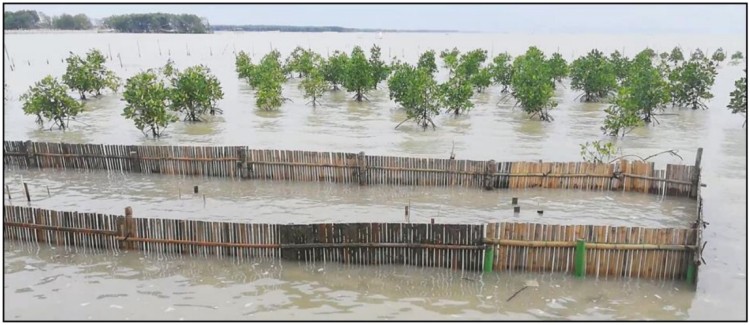F.F. van Rees1*, B.K. van wesenbeeck1, C.E.J. van Bijsterveldt2, T.J. Bouma2
1 Deltares,
2 NIOZ,
Introduction
Mangrove restoration successes are very much determined by the physical/environmental conditions of the hydrodynamic system. At the coast of Demak, Java, Indonesia, seedlings in fluid mud die in their first year and full recruitment fails. Unable to link this to research-based causes (e.g. seedlings unable to grow at unsuitable depth, duration and frequency of tidal flooding), this study aims to elaborate on the link between soil strength and seedling anchorage, which has not been studied before.
Methods
Hydrodynamic forces and critical erosion were mimicked by manually dislodging Avicennia ssp. and R. mucronata from the field. The findings were compared with the measured hydrodynamic forces in the field. In addition, a field experiment was conducted in mesocosm in a sheltered environment, so that soil water content could be altered and its effect on dislodgement force could be measured.
Results
Avicennia ssp. stabilizes itself significantly faster with longer stem lengths than R. mucronate in sand and fluid mud, respectively. Seedlings with longer stems have longer, thicker and more roots than seedlings with shorter stems. Surprisingly, wave forces are two orders of magnitude lower than dislodgement forces. Dislodgment of seedlings appeared to be linked to critical erosion. Yet, more erosion was needed to dislodge seedlings (of any species) from sand, compared with dislodging seedlings from fluid mud. Dislodgement by erosion from fluid mud is physically possible. Yet, mortality of seedlings of mangroves remains not fully understood. Possibly unsuccessful recruitments have a biological cause as well.

Figure 1 Sheltered experimental set-up in the field.
I. Surname1*, F.N. Another-Surname2 , Y. Next-Surname2
1 University Name, Country; 2 Organization Name, Country
* Corresponding author: mail.name@organization.org


